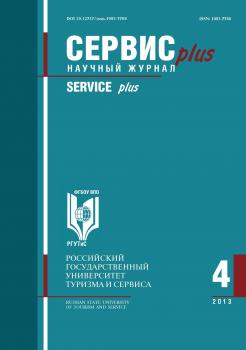Moscow, Russian Federation
In the period of “thaw” (mid 1950s – mid 1960s), there is a sharp qualitative and quantitative growth of Soviet cinema. If in 1951 in the USSR was filmed just nine films which didn’t represent a high artistic value in the creative attitude, already in 1956–57, Soviet cinema shocked the whole world. In 1958 they released 66 new Soviet film, but by 1960 our film industry overcame the milestone of 100 films and continued to steadily increase the production. The growth of the film industry contributed to the cinema spreading and film distribution. In the years of “thaw” in the USSR cinema attendance exceeded 3 billion, compared to 1.5 billion in 1953. The Gross fundraising from screenings at state cinema chains increased to 5.5 million rubles in 1957, and throughout the hole cinema chain – up to 7.5 million rubles. On the 1st January 1958, the chain consisted of 80 thousand cinemas, including more than 50 thousand in rural areas. By this time, they had mastered new technical possibilities of cinema (wide-screen, panoramic, wide angle, circular panorama). They fully mastered color film. However, in the field of cinema there were still a lot of unresolved issues. Revenues from films increased annually in largely through the construction and commissioning of new cinemas, and due to the tightening operation mode of already active cinemas, contrary to their real capabilities. But cinema rigidly centralized administrative-command system which had been formed in the 1930s continued to operate until the perestroika in the Soviet. They sold films to the distributors as a “product” based on the amount of the estimated cost of the film. The Studio was lcompletely disinterested in the outcome of the promotion of the film, its success with the audience. Thus, they did not have a major driver in the fight for the quality of films. Numerous attempts of the Filmmakers ‘ Union, established in 1957, to change the existing system didn’t have the results. The only application of far-reaching ideas of the Union became an Experimental creative Studio.
film distribution, cinema network, spreading of the cinema, moviegoers, films shown on cinemas, cinema, field equipment
Трудные годы «малокартинья» болезненно
сказались не только на кинопроизводстве, но
и на кинофикации и кинопрокате. На 1 января
1953 г. количество киноустановок в стране со-
ставляло 49496. Эта цифра выглядит более чем
впечатляюще, но не для такой огромной стра-
ны, как Советский Союз, население которого
к середине 1950-х годов насчитывало 210 млн
человек.
1. Zorina N.M. K voprosu o prezentatsii teorii diskursa v ramkakh rechevedcheskikh distsiplin. Vestnik Assotsiatsii vuzov turizma i servisa. 2009. № 3. S. 93-98.
2. Kortunov V.V. Chelovek mezhdu real´nost´yu i kiberprostranstvom. Sovremennye issledovaniya sotsial´nykh problem (elektronnyy nauchnyy zhurnal). 2013. № 1 (21).S.3.
3. Kortunov V.V., Sheleketa V.O. K voprosu o filosofsko-kul´turologicheskom obosnovanii gumanitarnoy ekspertizy sotsial´no-politicheskikh protsessov. Servis plus. 2014. T. 8. № 4. S. 9-14.
4. Krasnova O.N. Razvitie grazhdanskikh initsiativ v politicheskom protsesse (na materialakh FRG). Avtoref. … kand. polit. nauk / Moskovskiy gosudarstvennyy universitet im. M.V. Lomonosova. M., 1998.
5. RGANI f. 5, op. 17, d. 450.
6. RGANI, f. 5, op. 30, d. 131.
7. RGANI, f. 5, op. 36, d. 113.
8. Kortunov V. Modernization of Russia in the Context of Cultural Experience of the East and West. Middle East Journal of Scientific Research. 2013. T. 14. № 1. S. 41-46.
9. Kortunov V.V., Platonova N.A. Philosophical and Socio-Cultural Aspects of the Economic Type of Thinking. Middle East Journal of Scientific Research. 2013. T. 16. № 2. S. 296-303.

















